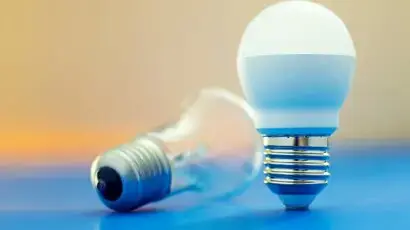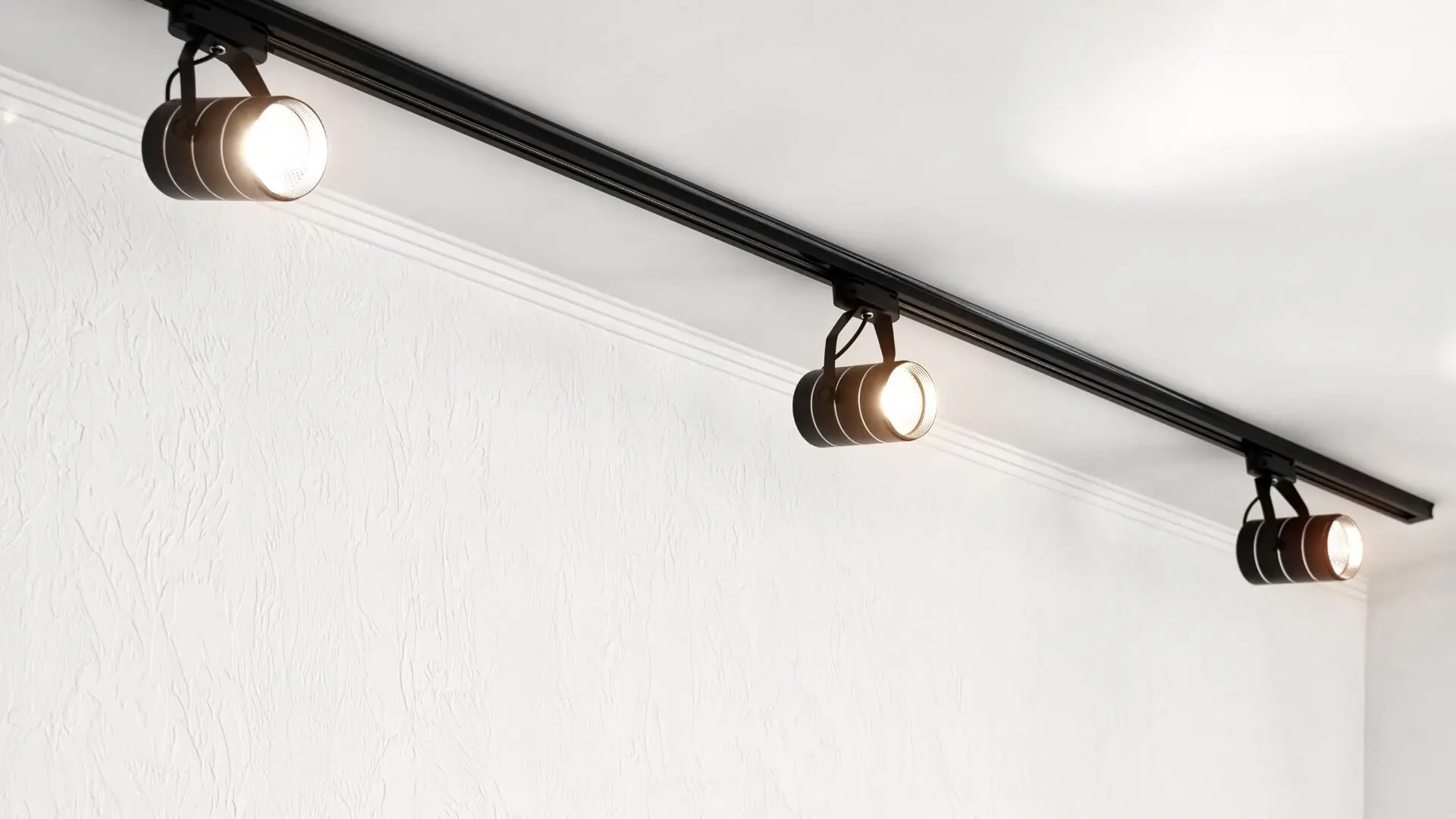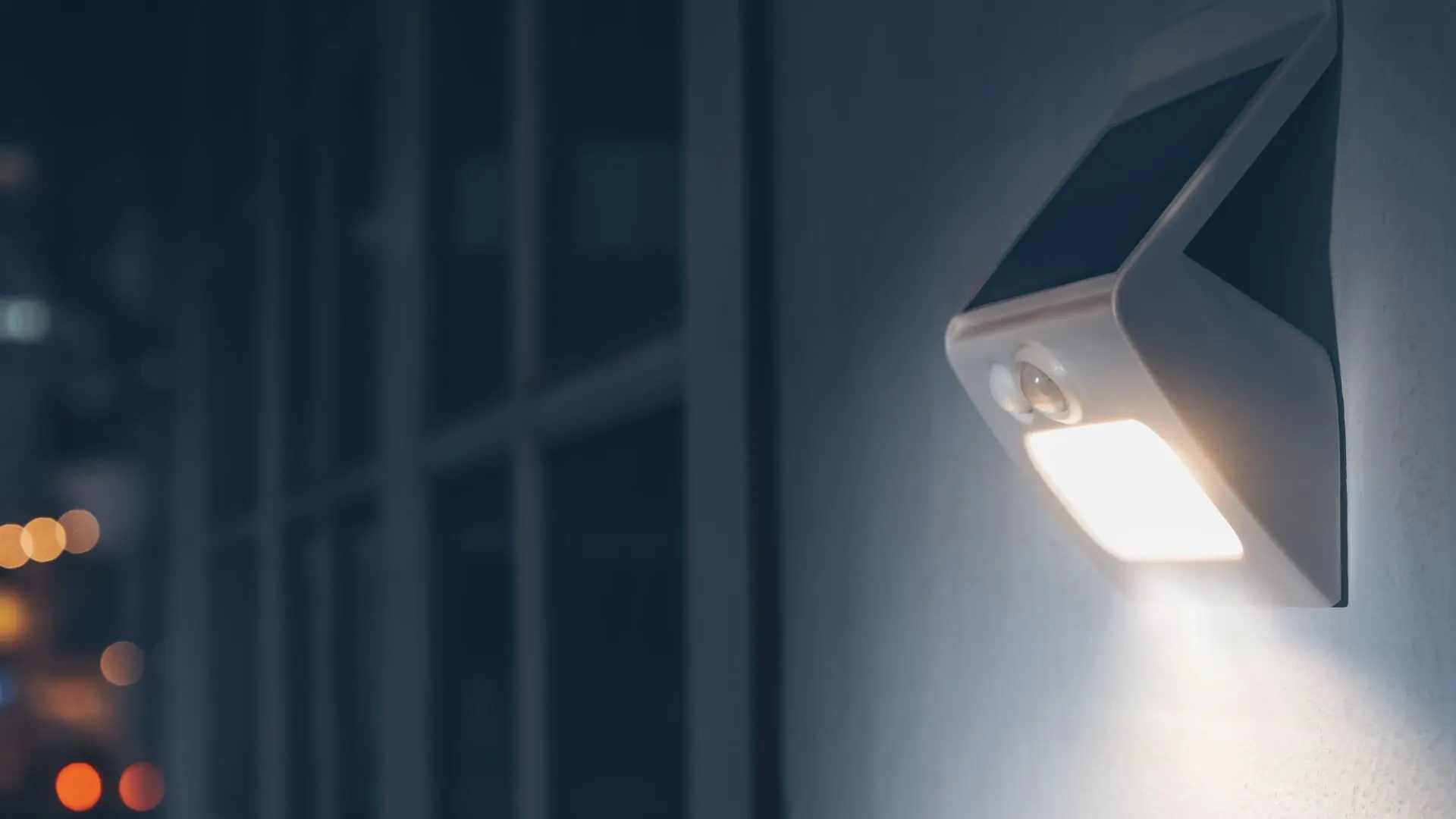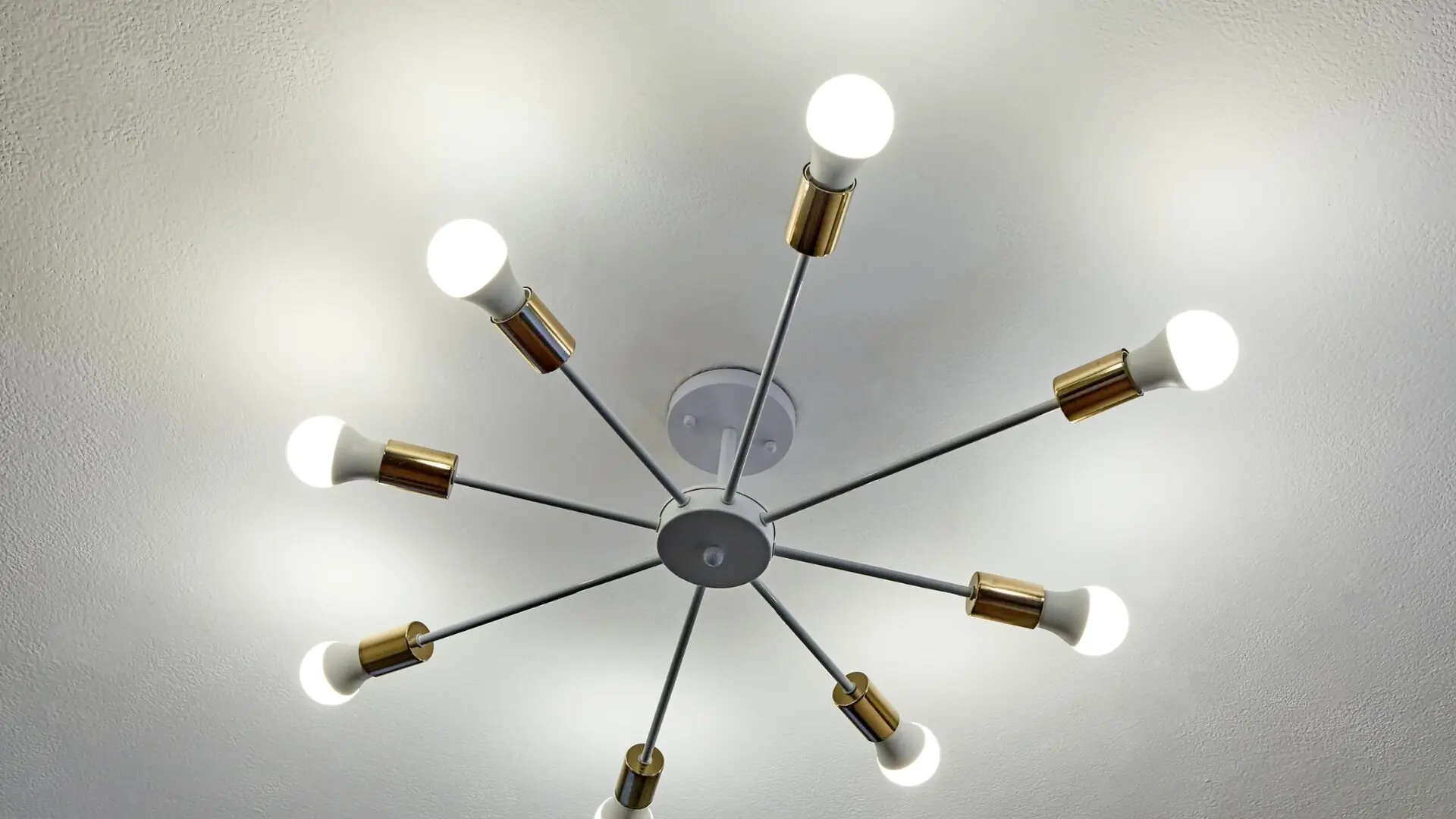
Get your free Melbourne Electrician quote today!
Our team of Melbourne Electricians is here to help you with any questions or concerns you may have. We’re committed to providing you with the best possible service and support.
 ### Energy Efficiency: Slash Your Electricity Bills
LED lighting is a game-changer, primarily due to its remarkable energy efficiency. These lights consume up to 80% less energy than traditional incandescent bulbs. This significant reduction not only slashes your energy bills but also leads to huge savings over time. For example, while a typical incandescent bulb uses 60 watts, an LED can do the job with just 12 watts. Check out more about these savings
here
.
By embracing LED technology in your home or business, you cut down on the energy needed to light up spaces. This action directly lessens the strain on power plants and helps lower greenhouse gas emissions. Opting for energy-efficient LEDs is not just about lowering your bills; it’s also about making a tangible difference in creating a more sustainable planet.
### Unmatched Lifespan: Long-lasting Illumination
LED bulbs are celebrated for their longevity compared to traditional options. An average LED light bulb can last approximately 50,000 hours, far outstripping the 1,000-hour lifespan of conventional incandescent bulbs. This immense lifespan reduces the frequency of replacements, which means lower maintenance costs and less waste generated.
The long life of LED bulbs also means fewer instances where one needs to climb ladders to change bulbs, enhancing safety within homes and workplaces. This LED illumination aspect ensures both efficiency and safety are maintained.
### Improved Colour Rendering: See Things in a New Light
Have you ever struggled to match your outfit under artificial light, only to find mismatched colours in natural light? This is all thanks to a
**light source’s Colour Rendering Index (CRI)**
. CRI measures how faithfully a light source reveals colours compared to natural light.
**Sunlight, with its perfect CRI of 100, acts as the benchmark**
.
Traditionally, incandescent bulbs dominated our homes. While warm and familiar, they emit a broad spectrum of light, including a lot of infrared light, generating heat but not contributing to colour rendering. Enter LED lighting. LEDs, or light-emitting diodes, are revolutionising lighting with their ability to deliver light in a much narrower spectrum. This often translates to a higher CRI, meaning colours appear more accurate and vibrant.
### Energy Efficiency: Slash Your Electricity Bills
LED lighting is a game-changer, primarily due to its remarkable energy efficiency. These lights consume up to 80% less energy than traditional incandescent bulbs. This significant reduction not only slashes your energy bills but also leads to huge savings over time. For example, while a typical incandescent bulb uses 60 watts, an LED can do the job with just 12 watts. Check out more about these savings
here
.
By embracing LED technology in your home or business, you cut down on the energy needed to light up spaces. This action directly lessens the strain on power plants and helps lower greenhouse gas emissions. Opting for energy-efficient LEDs is not just about lowering your bills; it’s also about making a tangible difference in creating a more sustainable planet.
### Unmatched Lifespan: Long-lasting Illumination
LED bulbs are celebrated for their longevity compared to traditional options. An average LED light bulb can last approximately 50,000 hours, far outstripping the 1,000-hour lifespan of conventional incandescent bulbs. This immense lifespan reduces the frequency of replacements, which means lower maintenance costs and less waste generated.
The long life of LED bulbs also means fewer instances where one needs to climb ladders to change bulbs, enhancing safety within homes and workplaces. This LED illumination aspect ensures both efficiency and safety are maintained.
### Improved Colour Rendering: See Things in a New Light
Have you ever struggled to match your outfit under artificial light, only to find mismatched colours in natural light? This is all thanks to a
**light source’s Colour Rendering Index (CRI)**
. CRI measures how faithfully a light source reveals colours compared to natural light.
**Sunlight, with its perfect CRI of 100, acts as the benchmark**
.
Traditionally, incandescent bulbs dominated our homes. While warm and familiar, they emit a broad spectrum of light, including a lot of infrared light, generating heat but not contributing to colour rendering. Enter LED lighting. LEDs, or light-emitting diodes, are revolutionising lighting with their ability to deliver light in a much narrower spectrum. This often translates to a higher CRI, meaning colours appear more accurate and vibrant.
 Imagine a clothing store with a high-CRI LED fixture. The rich reds of a dress and the subtle blues of a shirt would shine through exactly as they would in natural light. This is crucial in retail spaces where customers rely on accurate colour perception. Similarly, a high-CRI light source in a bathroom helps with applying makeup, ensuring flawless results every time.
The benefits extend beyond aesthetics. Accurate colour rendering under LED lighting is vital for quality control in construction or manufacturing sites. Low-CRI light sources can mask defects, leading to costly rework later. Additionally, LEDs with minimal infrared light emission are ideal for traffic-related public exposure, like bus shelters, as they minimise heat build-up, especially in our low-temperature evenings.
So, consider the CRI next time you choose a lighting system. With LEDs offering superior colour rendering, you’ll truly be seeing things in a new light.
### Versatility: Lighting for Every Space
LED technology offers incredible versatility in lighting design. Available in a range of colour temperatures, LED lights can enhance the ambience of any space—from warm whites ideal for cosy living rooms to cool whites suited for bright, functional kitchens. Additionally, the ability of LED lights to be dimmed allows for adjustable brightness, setting the perfect mood for any occasion.
There’s a wide range of LED bulb types available—from downlights and spotlights to strip lights. This variety makes them perfect for just about any application you can think of. Outdoor lighting particularly benefits from this versatility, where both design and functionality are essential.
### Safety and Environment: A Brighter Future
LEDs contribute to safety because they don’t contain dangerous chemicals like mercury, which are commonly found in fluorescent bulbs. Plus, they produce very little heat, making them safer to touch and helping maintain a cooler atmosphere.
The environmental benefits of LED lighting are significant. Reduced energy consumption directly correlates with fewer carbon emissions. Plus, responsible disposal options are available for LED bulbs at the end of their lifespan, ensuring they don’t just fill up landfill sites. This holistic approach to design and disposal underlines the environmental advantages of LED technology, paving the way for a brighter, more sustainable future.
## Making the Switch: A Smooth Transition
Imagine a clothing store with a high-CRI LED fixture. The rich reds of a dress and the subtle blues of a shirt would shine through exactly as they would in natural light. This is crucial in retail spaces where customers rely on accurate colour perception. Similarly, a high-CRI light source in a bathroom helps with applying makeup, ensuring flawless results every time.
The benefits extend beyond aesthetics. Accurate colour rendering under LED lighting is vital for quality control in construction or manufacturing sites. Low-CRI light sources can mask defects, leading to costly rework later. Additionally, LEDs with minimal infrared light emission are ideal for traffic-related public exposure, like bus shelters, as they minimise heat build-up, especially in our low-temperature evenings.
So, consider the CRI next time you choose a lighting system. With LEDs offering superior colour rendering, you’ll truly be seeing things in a new light.
### Versatility: Lighting for Every Space
LED technology offers incredible versatility in lighting design. Available in a range of colour temperatures, LED lights can enhance the ambience of any space—from warm whites ideal for cosy living rooms to cool whites suited for bright, functional kitchens. Additionally, the ability of LED lights to be dimmed allows for adjustable brightness, setting the perfect mood for any occasion.
There’s a wide range of LED bulb types available—from downlights and spotlights to strip lights. This variety makes them perfect for just about any application you can think of. Outdoor lighting particularly benefits from this versatility, where both design and functionality are essential.
### Safety and Environment: A Brighter Future
LEDs contribute to safety because they don’t contain dangerous chemicals like mercury, which are commonly found in fluorescent bulbs. Plus, they produce very little heat, making them safer to touch and helping maintain a cooler atmosphere.
The environmental benefits of LED lighting are significant. Reduced energy consumption directly correlates with fewer carbon emissions. Plus, responsible disposal options are available for LED bulbs at the end of their lifespan, ensuring they don’t just fill up landfill sites. This holistic approach to design and disposal underlines the environmental advantages of LED technology, paving the way for a brighter, more sustainable future.
## Making the Switch: A Smooth Transition
 While the upfront cost of LED lighting might seem steeper than traditional options like incandescent lights, the long-term benefits outweigh them. LEDs use significantly less electrical energy, saving you money on bills over the years.
Think of it as an investment. Unlike incandescent lights or halogen light bulbs, LED lights last for years, reducing frequent switching and the hassle of buying replacements. LEDs don’t emit harmful UV emissions or contain toxic chemicals like fluorescent lamps.
So, ditch the incandescent and fluorescent lamps. LEDs are perfect for indoor and outdoor settings, from home to construction sites. They deliver high-quality light instantly, at full brightness, with little radiated heat emission—perfect in our Aussie climate! They can even be used for creative lighting effects, replacing flashing light displays with dynamic control of colour and light emission. Whether you need standard lighting in remote areas or signal lights for traffic, quality LEDs are the future.
## Lighten Your Wallet and Brighten Your Future
Switching to LED lighting is the clear winner. LED lamps deliver visible light with minimal infrared light, making them ideal for protecting UV sensitive objects and cooler operation in low temperature environments like construction sites. Their low voltage operation and instant lighting make them safe and versatile. LED fixtures can achieve fantastic lighting effects, both indoors and outdoors, and can even be powered by an external solar energy source in remote or rural areas. So, ditch the conventional lighting and upgrade to LEDs for a brighter, more sustainable future!
If you’re on the hunt for LED lighting solutions, WP Electrical has you covered. They’re a trusted name in providing
LED downlight solutions
across Australia. Their expert team can help you find the best LED options for your home or business, ensuring you enjoy the perfect lighting effect while cutting down on energy costs and environmental impact.
Reach out to WP Electrical today
and step into a brighter future with LEDs! Published by: Pascal Harb17 October 2025
While the upfront cost of LED lighting might seem steeper than traditional options like incandescent lights, the long-term benefits outweigh them. LEDs use significantly less electrical energy, saving you money on bills over the years.
Think of it as an investment. Unlike incandescent lights or halogen light bulbs, LED lights last for years, reducing frequent switching and the hassle of buying replacements. LEDs don’t emit harmful UV emissions or contain toxic chemicals like fluorescent lamps.
So, ditch the incandescent and fluorescent lamps. LEDs are perfect for indoor and outdoor settings, from home to construction sites. They deliver high-quality light instantly, at full brightness, with little radiated heat emission—perfect in our Aussie climate! They can even be used for creative lighting effects, replacing flashing light displays with dynamic control of colour and light emission. Whether you need standard lighting in remote areas or signal lights for traffic, quality LEDs are the future.
## Lighten Your Wallet and Brighten Your Future
Switching to LED lighting is the clear winner. LED lamps deliver visible light with minimal infrared light, making them ideal for protecting UV sensitive objects and cooler operation in low temperature environments like construction sites. Their low voltage operation and instant lighting make them safe and versatile. LED fixtures can achieve fantastic lighting effects, both indoors and outdoors, and can even be powered by an external solar energy source in remote or rural areas. So, ditch the conventional lighting and upgrade to LEDs for a brighter, more sustainable future!
If you’re on the hunt for LED lighting solutions, WP Electrical has you covered. They’re a trusted name in providing
LED downlight solutions
across Australia. Their expert team can help you find the best LED options for your home or business, ensuring you enjoy the perfect lighting effect while cutting down on energy costs and environmental impact.
Reach out to WP Electrical today
and step into a brighter future with LEDs! Published by: Pascal Harb17 October 2025 